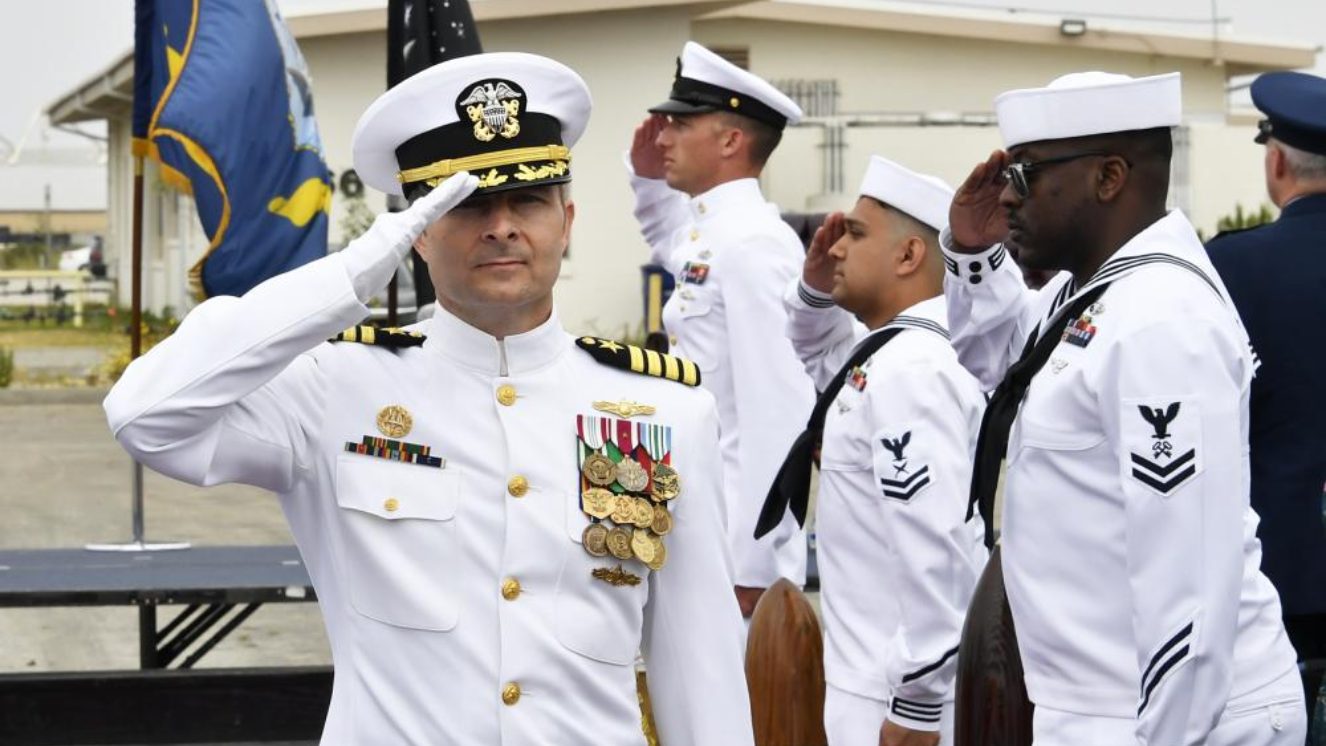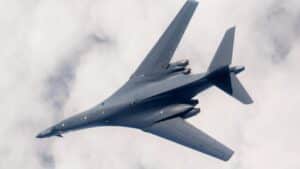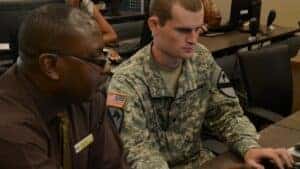The U.S. Navy has revealed a surprise project called Project Overmatch. Although it’s a surprise for the public, it isn’t a surprise for the U.S. Navy, as they’ve been working on it in secret for two years.
Reports are coming out that this program will help the future of data transportation. It will connect the different military forces of the United States. What do they have in store for the future of the Armed Forces? Here’s what we know.
Read next: State of the Union Talking Points: Gaza Port, Biden Hot Mic
What Is Project Overmatch?
Project Overmatch is a project led by the U.S. Navy for The Pentagon’s Joint All-Domain Command and Control initiative that helps aircraft, ships, drones, and more communicate effectively while conducting operations.
The Navy Project Overmatch program is now active after deploying the new technology on three carrier strike groups, including Carrier Strike Group 1 and the USS Carl Vinson.
During the two years of its development, Project Overmatch has gone through countless tests to help close existing gaps.
This includes: “simulating current pathways for data, writing software code to close gaps, testing it in a lab and at sea, and providing feedback to coders to improve future iterations.”
While Project Overmatch serves as the Navy’s contribution to the Joint All-Domain Command and Control effort, there are still no solidified numbers of the $192 million investment sought by Sailors for fiscal year 2024.
With that being said, Project Overmatch is a way for the Navy to help the Pentagon map out their funding. Furthermore, this allows opportunities for collaboration in any environment without difficulties.
Project Overmatch efforts will continue for years to come, specifically in the next two or three years. The program is focused on the “near-term operational problems faced by commanders dealing with China,” said Bryan Clark, a senior fellow and director of the Center for Defense Concepts and Technology at the Hudson Institute.
The U.S. Navy will continue to use its new Navy technology at sea. Furthermore, it will help them to further advance their critical line of research. Additionally, the Navy is considering ways to “better share information across ships and aircraft so the best-positioned platform can strike a target.”
Created back in the fall of 2020, the Chief of Naval Operations, Admiral Mike Gilday, spearheaded Project Overmatch. He also appointed Rear Admiral Doug Small, commander of Naval Information Warfare Systems Command, to lead certain efforts for Project Overmatch.
How Will Project Overmatch Help the Navy?
Project Overmatch connects the gaps in the Navy’s strategies for transmitting data.
With the Joint All-Domain Operations and Joint All-Domain Command and Control strategy working together, the Navy seeks to launch the project. Additionally, they are pushing for more efficient ways to send information from ship to ship, ship to land, and land to ship.
Project Overmatch contractors and the Navy are helping the Navy in its future missions. Particularly, when it comes to technology and communication.
The overall goal is to address gaps for Sailors that help them operate more effectively. The project is focusing on potential gaps that would be present should a conflict in the Indo-Pacific region break out with the U.S. Navy.
What Are the Navy’s Plans Moving Forward?
Now, Project Overmatch is in a preliminary rollout stage on carrier strike groups. The next goal is to participate in Project Convergence 2024.
This is an exercise in which experimental concepts and technologies are tested by the U.S. Army. If there are issues during Project Convergence, the concept is brought back for more experiments.
Eventually, the Navy wants to have 11 carrier strike groups with the technology. In short, this is equal to a large portion of the existing naval fleet.
With the U.S. Navy Project Overmatch efforts being tested within the Marine Corps, the team has received feedback from them. However, they have already made some “connections” within the first six months of this endeavor.
The Air Force, which has their Advanced Battle Management System, is also in line to adapt to the “next generation of command-and-control tech.”
Additionally, the team is also working to connect more countries to their platform. It started out as a sharing group known as the “Five Eyes.” This includes the United States, the United Kingdom, Canada, Australia, and New Zealand.
If you want to learn more, click here to explore a Project Overmatch PDF from 2021 that outlines the problems the Navy currently faces and general strategies for the program.
Project Overmatch: Acceleration to Military Dominance
As the United States invites other “allies and partners to collaborate on the software development” at Project Overmatch, they are focusing on their “massive networking endeavors,” which require a continuing development process that would maintain our advantage over our enemies, who are capable of “jamming, intercepting, and muddying communications.”
In sum, the future looks promising for the U.S. Navy and military as a whole, as attempts to be ahead of the game are already proving fruitful. In the end, Project Overmatch seeks to connect different forces of the U.S. military and allied countries for greater protection.
Suggested read: Military Officers Association of America (MOAA) – History & Benefits
Updated by Buddy Blouin
The appearance of U.S. Department of Defense (DoD) visual information does not imply or constitute DoD endorsement. Photo by Ensign Drew Verbis Naval Base Ventura County






